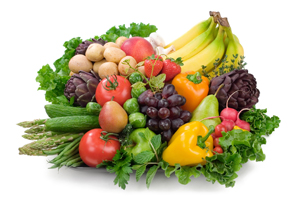by Julia Busch —
Editor’s note: This article is for information purposes only. Any application of the information contained in this column is done strictly at the risk of the user.
Attention deficit hyperactivity disorder (ADHD) is a neurological problem caused by genetic factors. Generally apparent before the age of 7, no two ADHD individuals are exactly alike. Dr. Daniel Amen, an assistant clinical professor of psychiatry and human behavior at the University of California, Irvine School of Medicine and a nationally recognized expert in the fields of brain behavior and brain imaging, has identified six different types of ADHD, each with its own particular problems.
Personalities fall into two main categories: inattentive or impulsive-hyperactive. Specific traits, such as boredom, are seen in most situations, with about 60 percent of ADHD children being oppositional or defiant.
With ADHD, one, two or several brain areas might be involved — frontal lobes (affecting focus, learning, planning, memory), inhibitory cortex mechanisms (issues of temper-control, decision-making, hyperactivity, talking out of turn), limbic system (encompassing wide mood swings, outbursts, being easily startled, hyper-vigilant, touching everything in sight), and the reticular activating system (the brain’s balance center that also provides the neural connections needed for the above). If the reticular activating system center is off and neural connections are in short supply, outside data cannot be processed using emotions or internal knowledge.
Interestingly, long-term studies show medication alone is not much better than no treatment at all. Medication plus individual “stop-and-think” therapy, family counseling and parent training are far more effective. Biofeedback helps 65 percent to 75 percent of ADHD individuals. Simple dietary experimentation to eliminate triggering foods helps about 20 percent (snack and convenience foods are the biggest problem) of those affected.
Feeding the brain with higher-protein, lower-carb meals is very helpful. For breakfast, a ratio of 60 percent protein and 40 percent carbs can be effective. For other meals, a 50/50 combination helps. This can include a breakfast and late afternoon coffee-protein shake (100 mg of caffeine is roughly equivalent to 5 mg of Ritalin).
Supplementation that specifically targets focus, stress and memory can make a world of difference. Colloidal minerals and omega oils, including flaxseed, primrose, borage and some fish oils can help, as can eating lots of fruits and veggies. Aluminum exposure is to be avoided entirely.
Julia Busch is president of Anti-Aging Press, Inc., editor of the So Young™ anti-aging holistic newsletter and author of 10 books. 800-SO-YOUNG (800-769-6864).
Reprinted from AzNetNews, Volume 25, Number 3, June/July 2006.






January 6, 2013
ADD/ADHD, Autism, Children and Teens, Emotional Wellness and Well-being, Food, Nutrition and Diet, Health, Health Concerns, Parenting